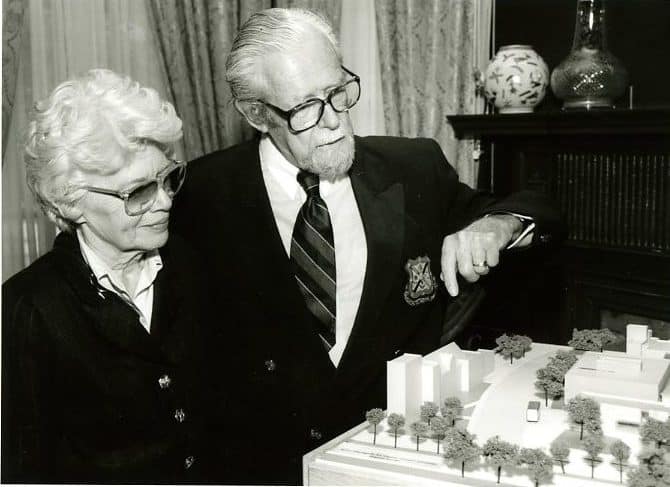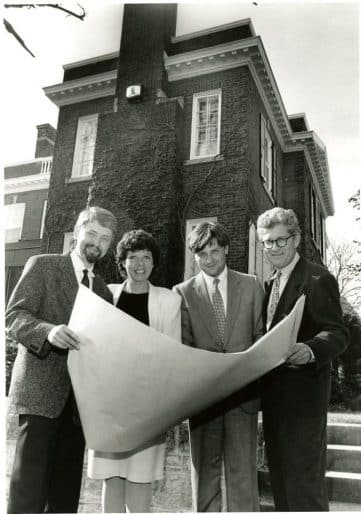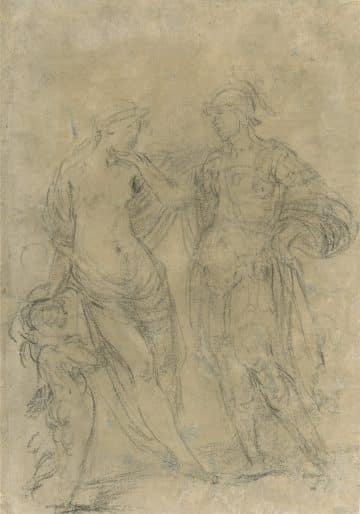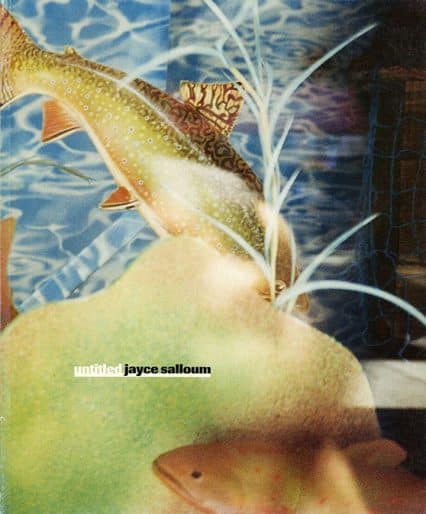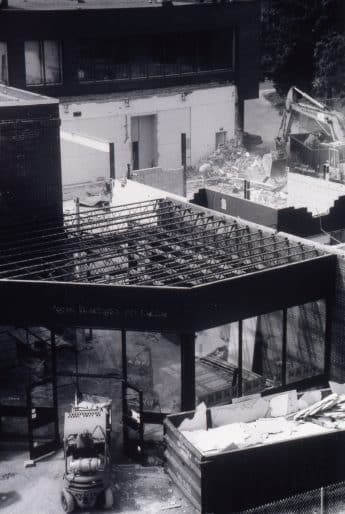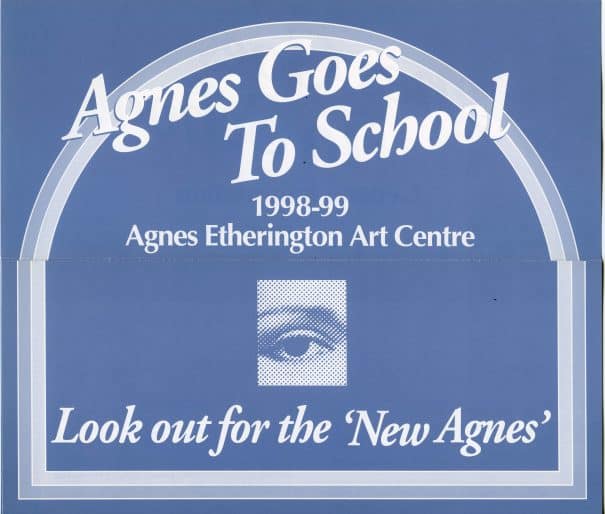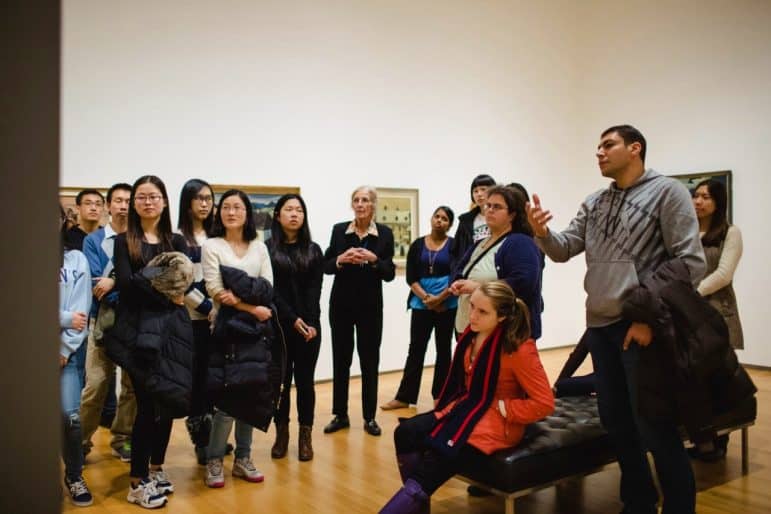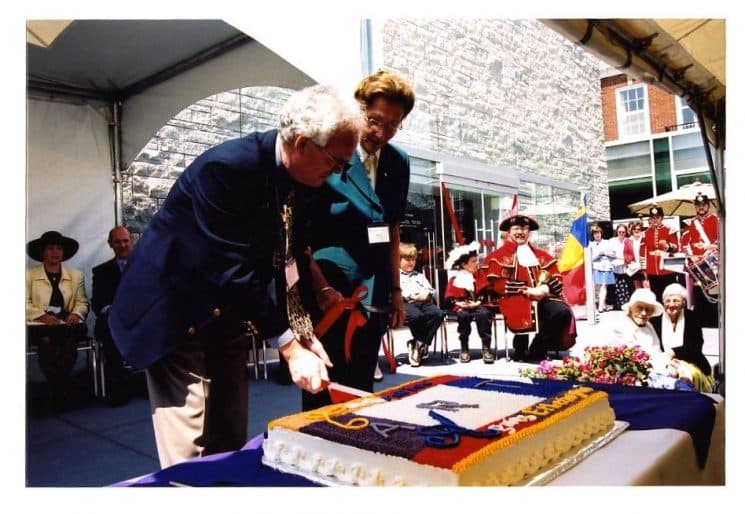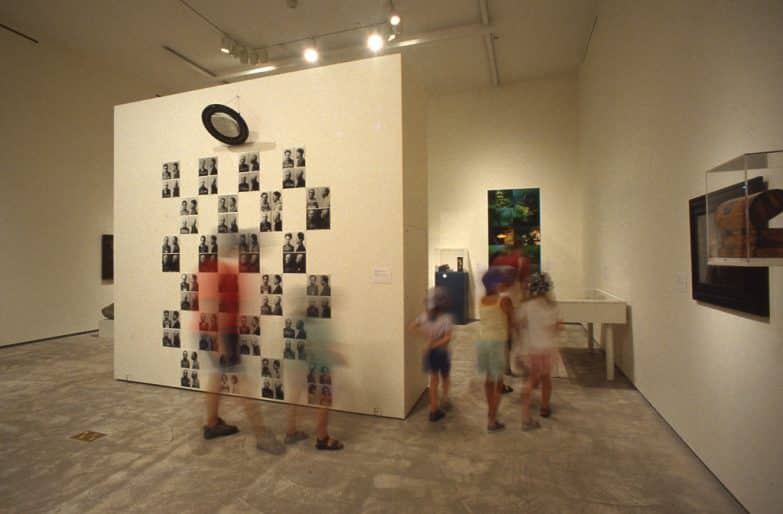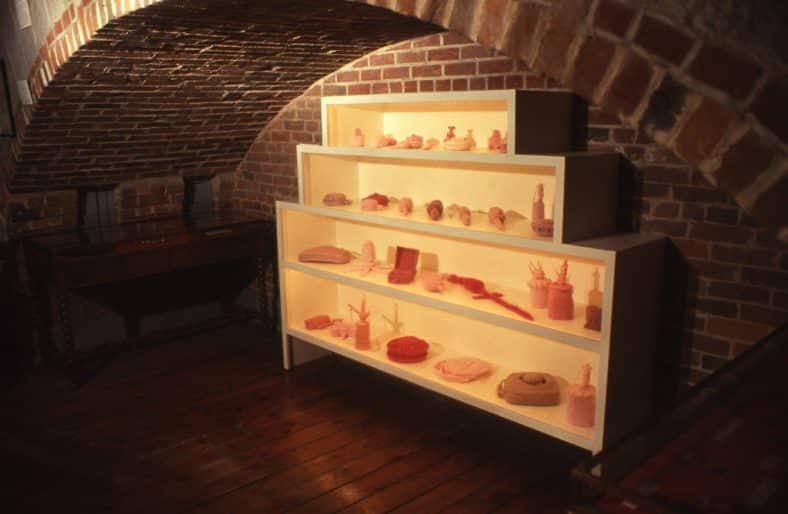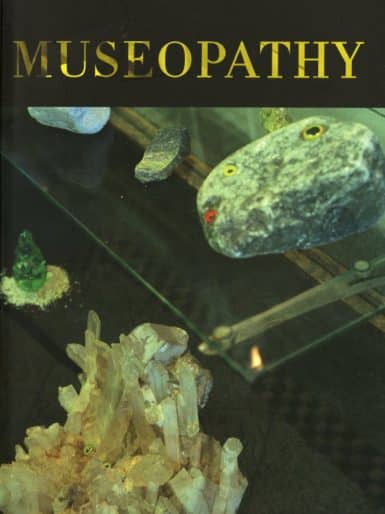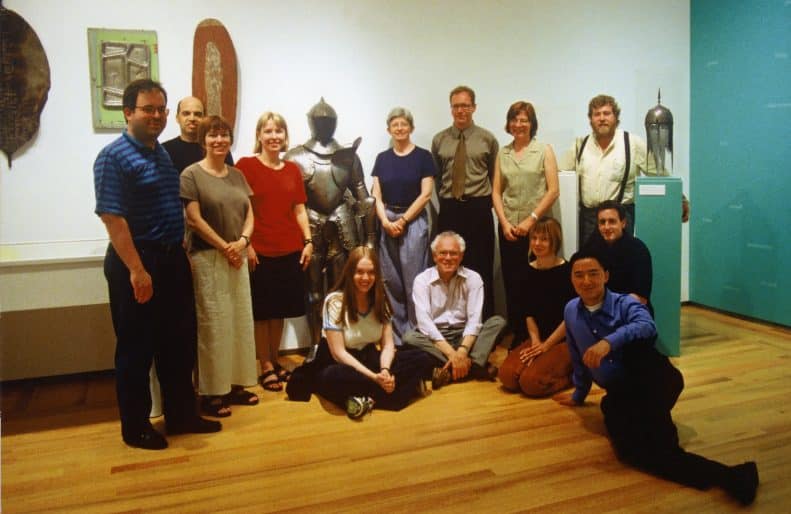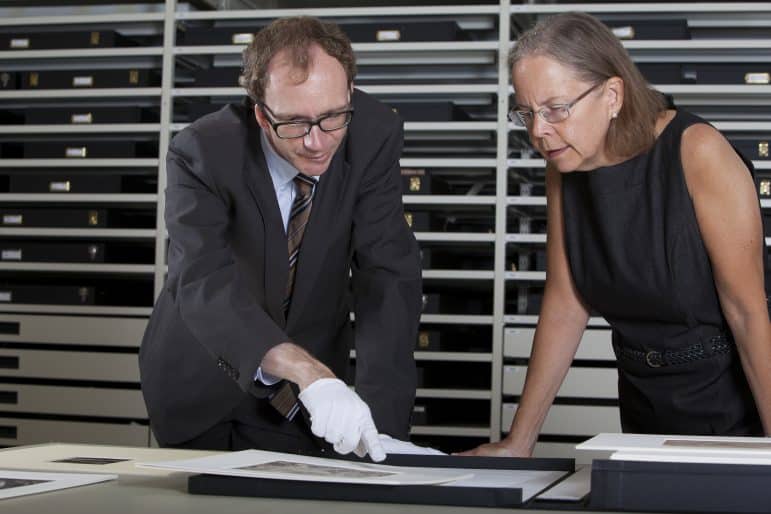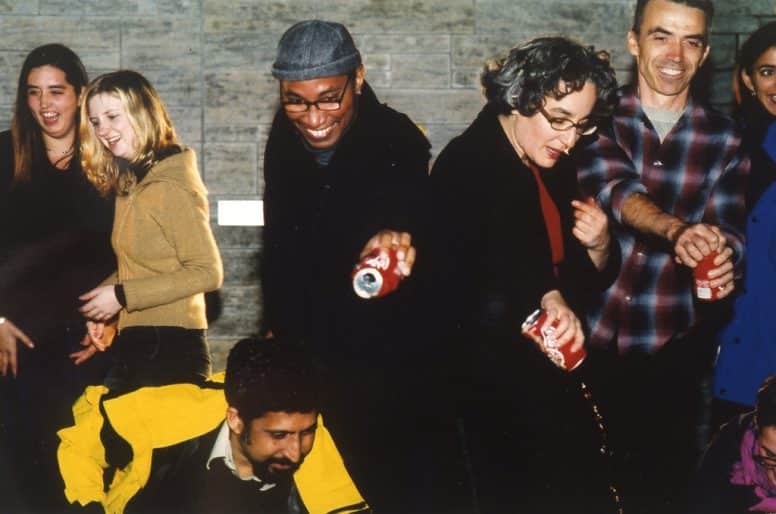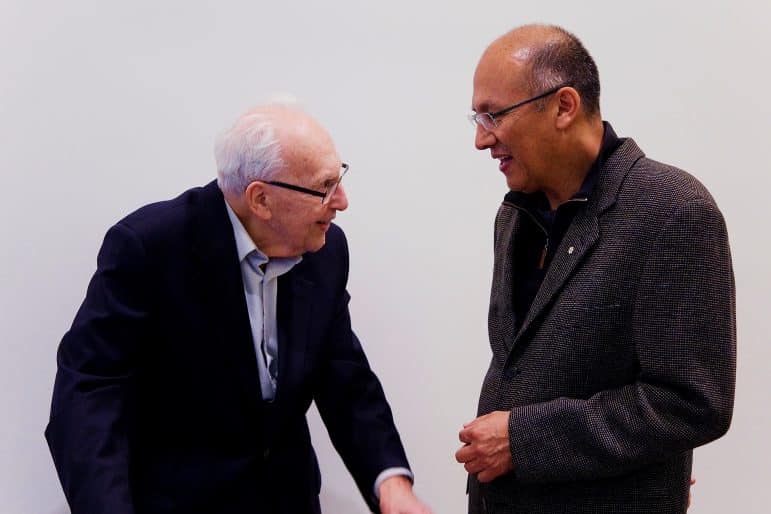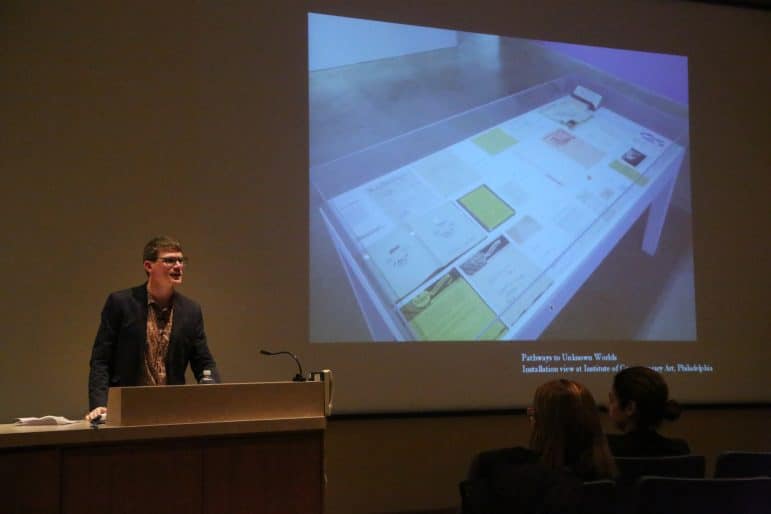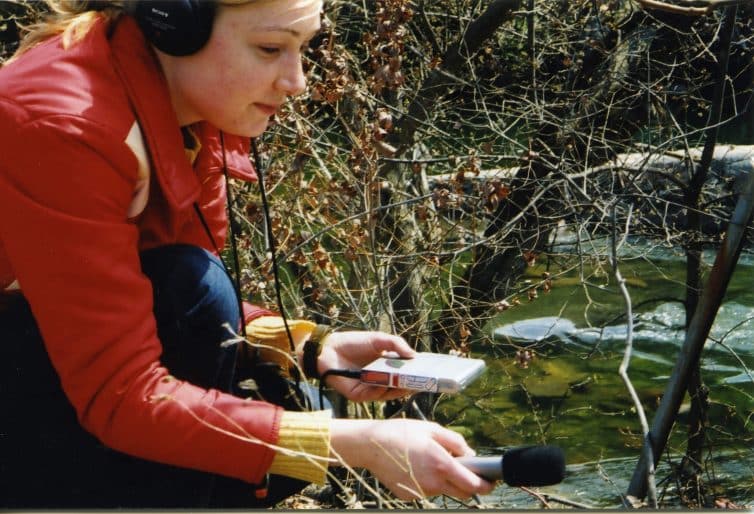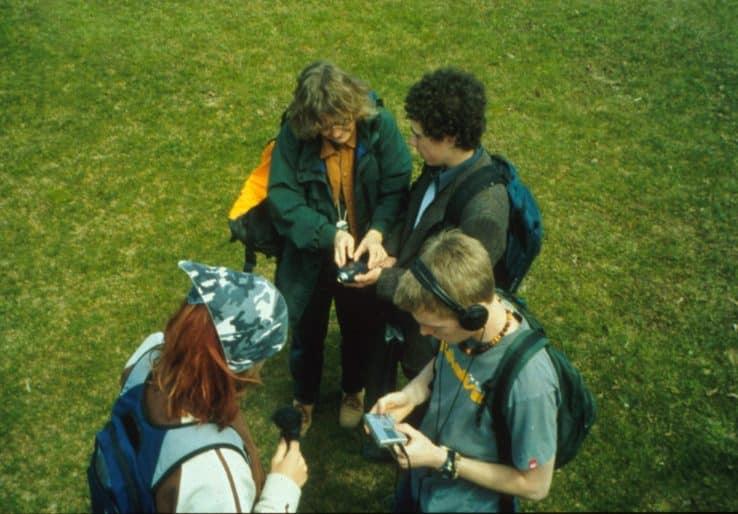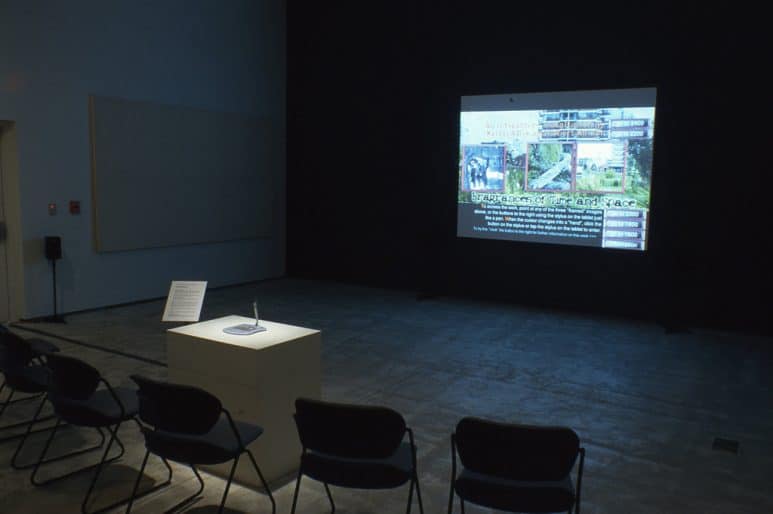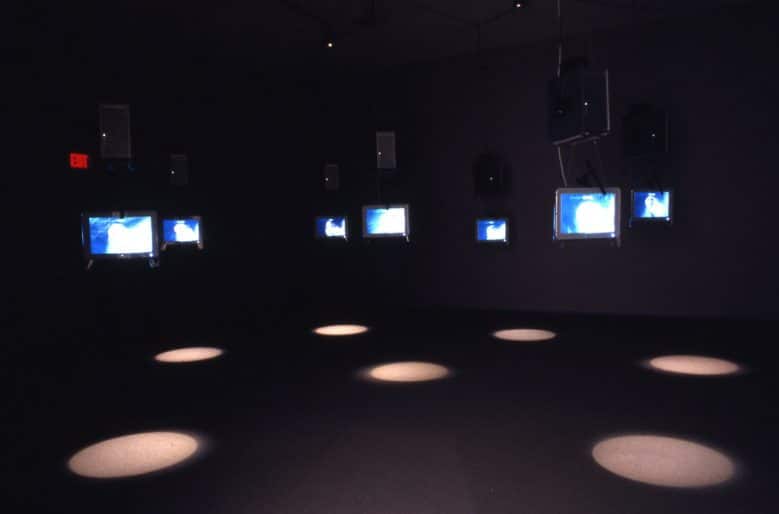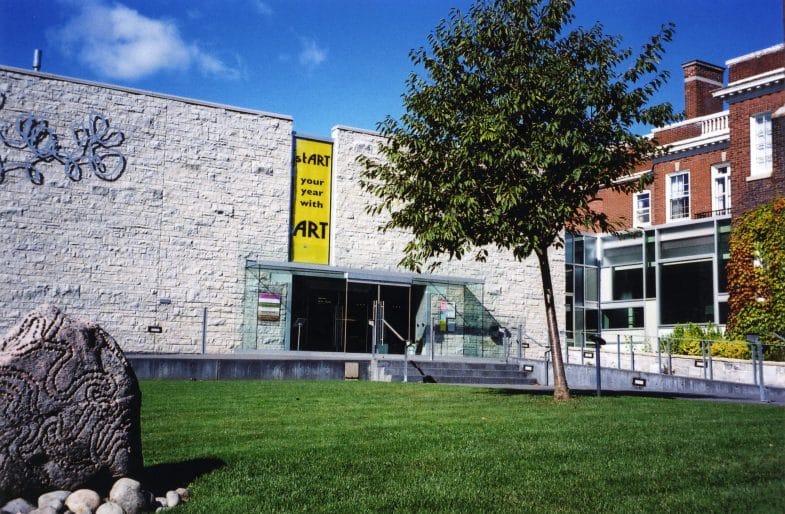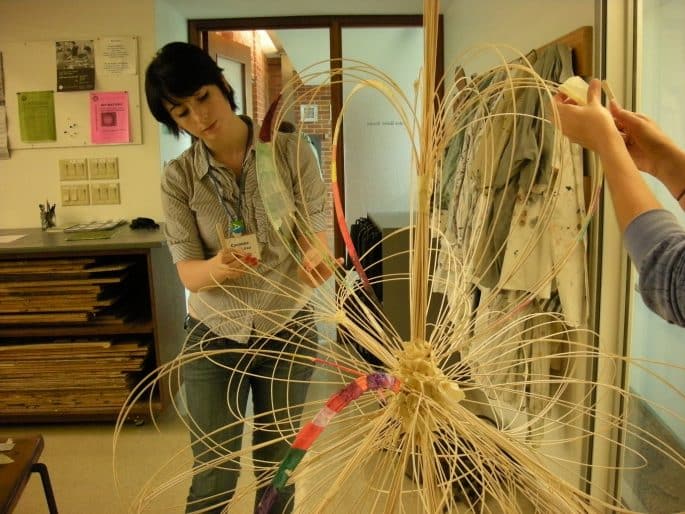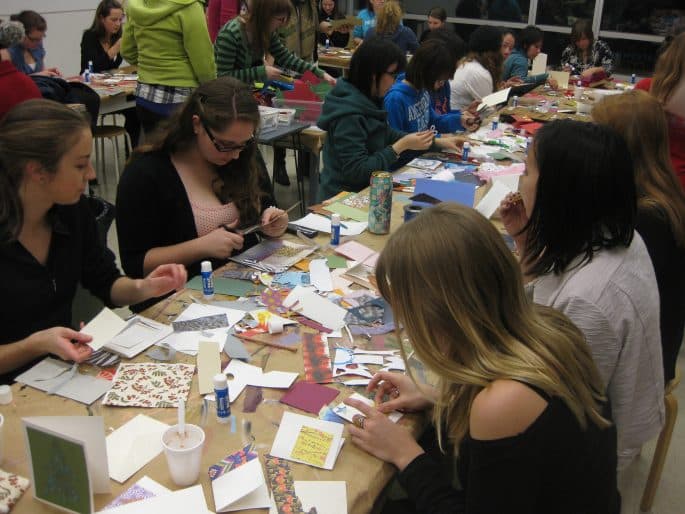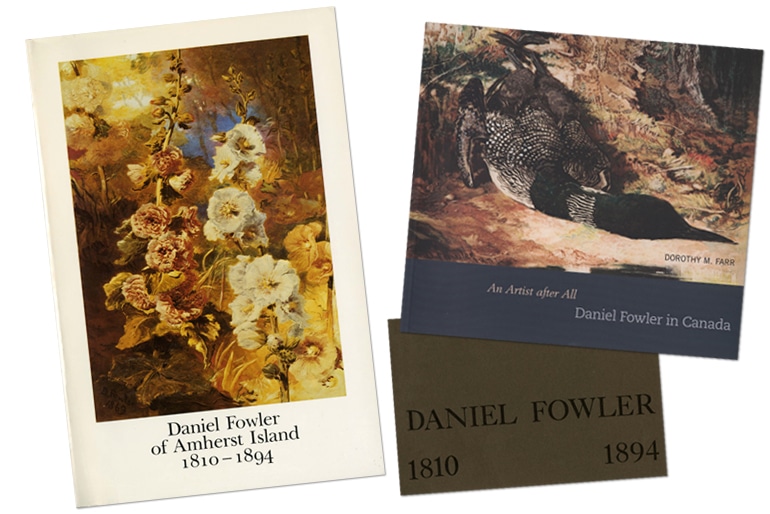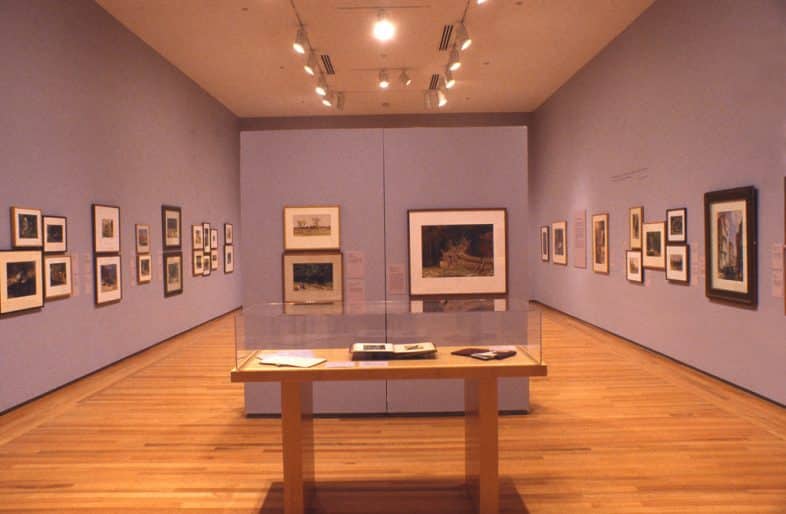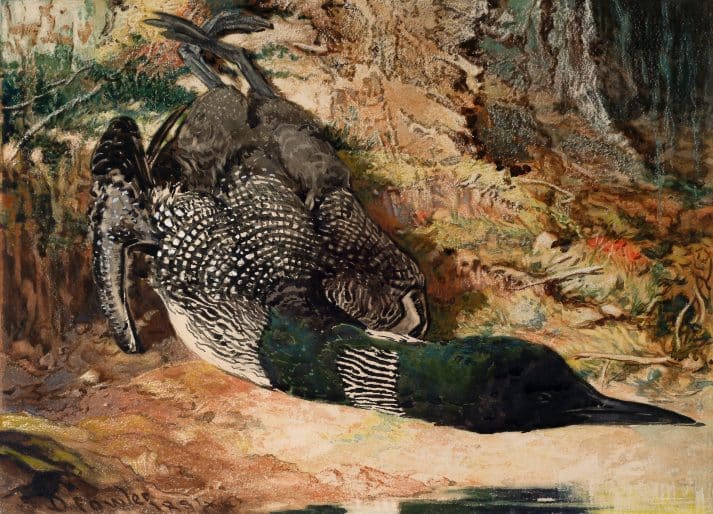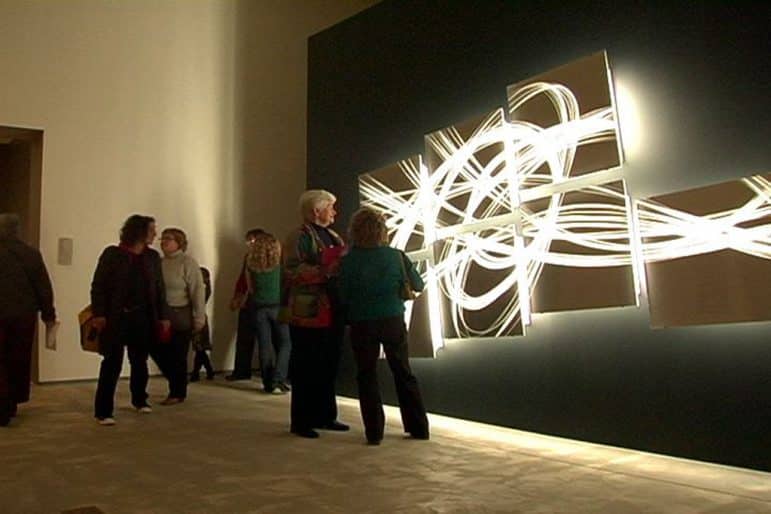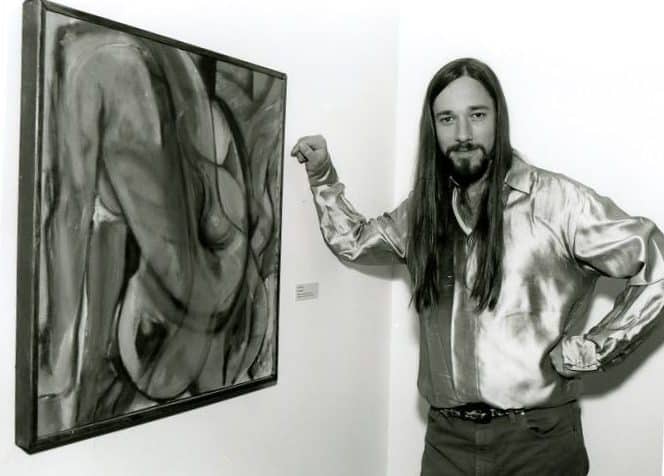
Celebrating 60: The Agnes in Six Decades

The “old” Agnes goes out on a high note with its successive fall shows. The Hip Collects features selected works by local contemporary artists from the collections of members of The Tragically Hip, Kingston’s premier rock band, followed by Social Process/Collaborative Action: Mary Kelly, 1970–75, on tour from the Charles H. Scott Gallery, Vancouver. The latter exhibition is animated by the American conceptual artist’s residency at Queen’s, during which she delivers a public lecture and works with students in the Departments of Art, Women’s Studies and Film Studies. The Agnes practicum is also offered for the first time, providing Art History graduate students with the opportunity to gain hands-on museum experience as part of their course work.
After a final holiday celebration sponsored by the Gallery Association, the Agnes closes to the public to begin packing for a major building renovation and expansion.
The collection moves to temporary storage, and the Agnes’s staff relocates to a former gymnasium at 218 Barrie Street, renamed The Interim Agnes, with offices and a small gallery space, for the next two years. Among the artworks is an important collection of 169 Italian drawings spanning the 16th through 19th centuries, donated in this year by Bayside Lakeshore Properties Ltd., Montreal.
Exhibitions at The Interim Agnes include Jayce Salloum: Neutral | Brakes | Steering, a syncopated installation of urban photography, and in the following year, Sylvat Aziz: Maqamaat, featuring critical cultural dialogue works by the new Queen’s Fine Art professor.
During construction, the longstanding “Agnes Goes to School” program is reintroduced with vigour. Student docents visit local schools with highly interactive “looking at art” presentations, making use of slides and mounted reproductions.
This year also marks the start of the community docent program, comprised of non-student Kingston residents who begin training to deliver exhibition tours for the public when the new gallery opens. As of 2017, the Community Docent program is still going strong at the Agnes, providing around eighty specialized in-gallery tours each year.
Micah Lexier’s commissioned A Minute of My Time (September 29, 1998 15:04 – 15:05), a Millennium Project, graces the facade of the new Agnes. The building, designed by A. J. Diamond, Donald Schmitt, and Company, Toronto, in a joint venture with Shoalts and Zaback Architects, Kingston, boasts eight new galleries, expanded storage, the André Biéler Studio for school programs and art classes, the Murie Meisel Seminar Room for academic engagement, and a welcoming Atrium for gatherings and lectures. Some 1300 people attend the grand re-opening festivities.
Museopathy: Contemporary Art in Kingston Heritage Sites is an innovative multi-site exhibition, guest curated by Jim Drobnick and Jennifer Fisher, initiated and coordinated by Jan Allen. Site-specific interventions by eminent contemporary artists are installed in ten participating museums and heritage sites throughout the city, while over 300 select objects from these museums’ collections are displayed at the Agnes in a contemporary kunstkammer, or cabinet of curiosities.
A new curatorial position is created through generous endowment. David De Witt is hired as Bader Curator of European Art—at the time, one of the very few privately funded museum positions in Canada—bringing much needed expertise to the gallery as this collection grows.
The inaugural Rita Friendly Kaufman Lecture is delivered by Nancy Yeide of the National Gallery of Art, Washington, DC, to a packed auditorium. Dr. Nathan Kaufman endowed the annual lecture in honour of his wife to bring to Kingston notable figures in the visual arts. Over the next thirteen years, invited speakers from around the world take their place at the podium. In 2015, the terms of the fund are revised to support visual art and cultural programming at the gallery, especially for children.
In 2002, the exhibition Better Worlds: Activist and Utopian Projects by Artists and its associated publication and symposium examine the relationship between individual and state.
Drs. Alfred and Isabel Bader donate Head of an Old Man in a Cap (around 1630) by Rembrandt van Rijn, the first painting by the master to enter a public collection in Canada in almost fifty years.
In the “mindscaping kingston mills” project, students from Queen Elizabeth Collegiate and Vocational Institute participate in an innovative workshop with Kingston artists Robert Mulder and Kristi Allik, a faculty member at Queen’s School of Music. Using sights and sounds from Kingston Mills Lock Station, they create short multimedia pieces. The project complemented Mulder and Allik’s exhibition Fragrances of Time and Space: Block D, an audio-visual invocation of the history of a former industrial site on Kingston’s waterfront.
Norman White’s The Helpless Robot (1987–2002), purchased for the collection, is the focal point of the exhibition Machine Life, investigating artists’ use of robotics through the work of White and the circle of artists he taught and influenced. Further extending the Agnes’s contemporary programming internationally, Sarindar Dhaliwal: Record Keeping, co-organized by the Agnes and the Organization of Visual Arts (OVA), London, opens at Canada House, then tours in the UK and Canada over the next three years.
In the same year, Ah, Wilderness! Resort Architecture in the Thousand Islands meshes exhibition production with academic engagement as a project developed by Dr. Pierre du Prey and his Art History students. Similarly, Cache: Three Contemporary Videos from Igloolik, in the following year, is curated by graduate students under Dr. Lynda Jessup.
Another form of student engagement, the second annual StART your year with ART! involves 446 Queen’s students with over a week of programs at the Agnes. The project spawns variations in the following years: stress busters, open houses and other studio events organized by students for students.
To mark 2005 as the 125th anniversary of Agnes Etherington’s birth, a new Celebrating Agnes Endowment Fund is established to support programming at the Agnes; and, in the following year, the James Richardson & Sons Limited Fund is created for ongoing upgrades and maintenance of the Agnes.
An Artist After All: Daniel Fowler in Canada enriches the Agnes’s history of exhibitions devoted to this 19th-century local Amherst Island artist, building on shows mounted in 1964 and 1979. Curator Dorothy Farr wins an Ontario Association of Art Galleries Curatorial Writing Award for the catalogue essay. The exhibition provides occasion for the inaugural Frances K. Smith Lecture in Canadian Art by curator Charles C. Hill of the National Gallery of Canada.
In the same year, Neutrinos They Are Very Small, developed in partnership with the Art Gallery of Sudbury, presents three artists’ responses to the research of the Sudbury Neutrino Observatory, a major international research project headed by Queen’s University’s Dr. Arthur B. McDonald, who later receives a Nobel Prize.
